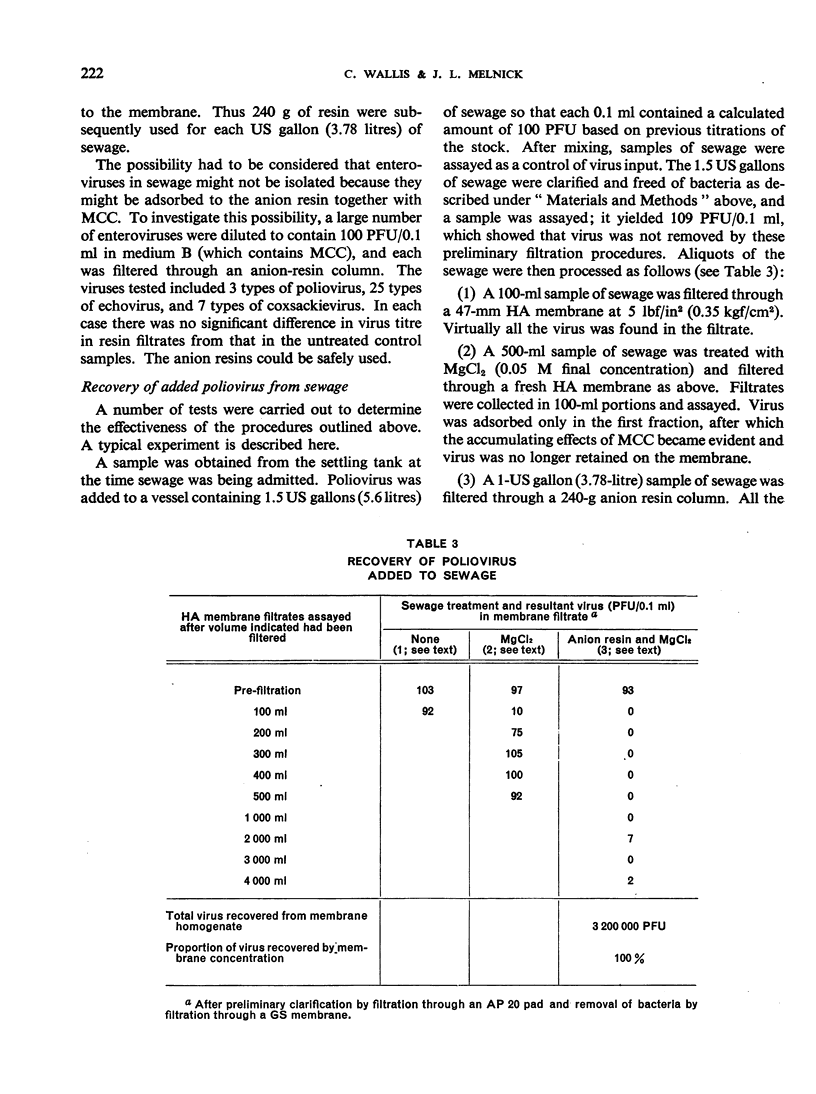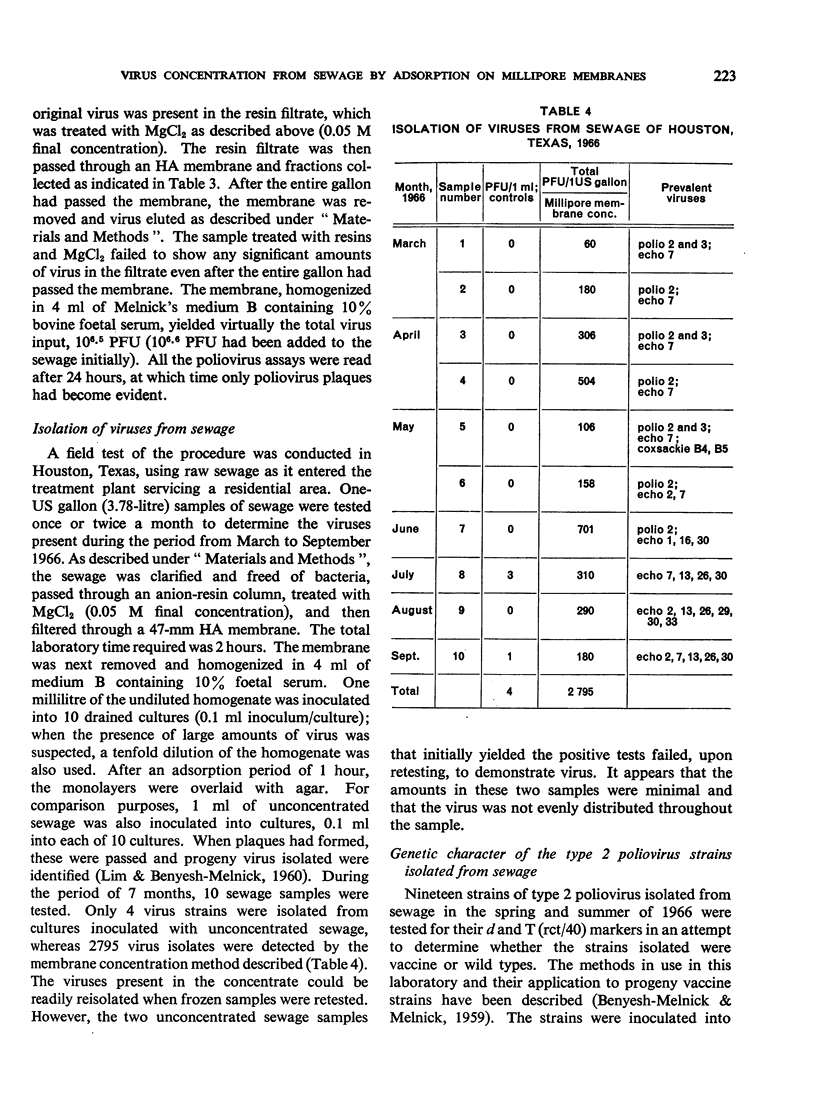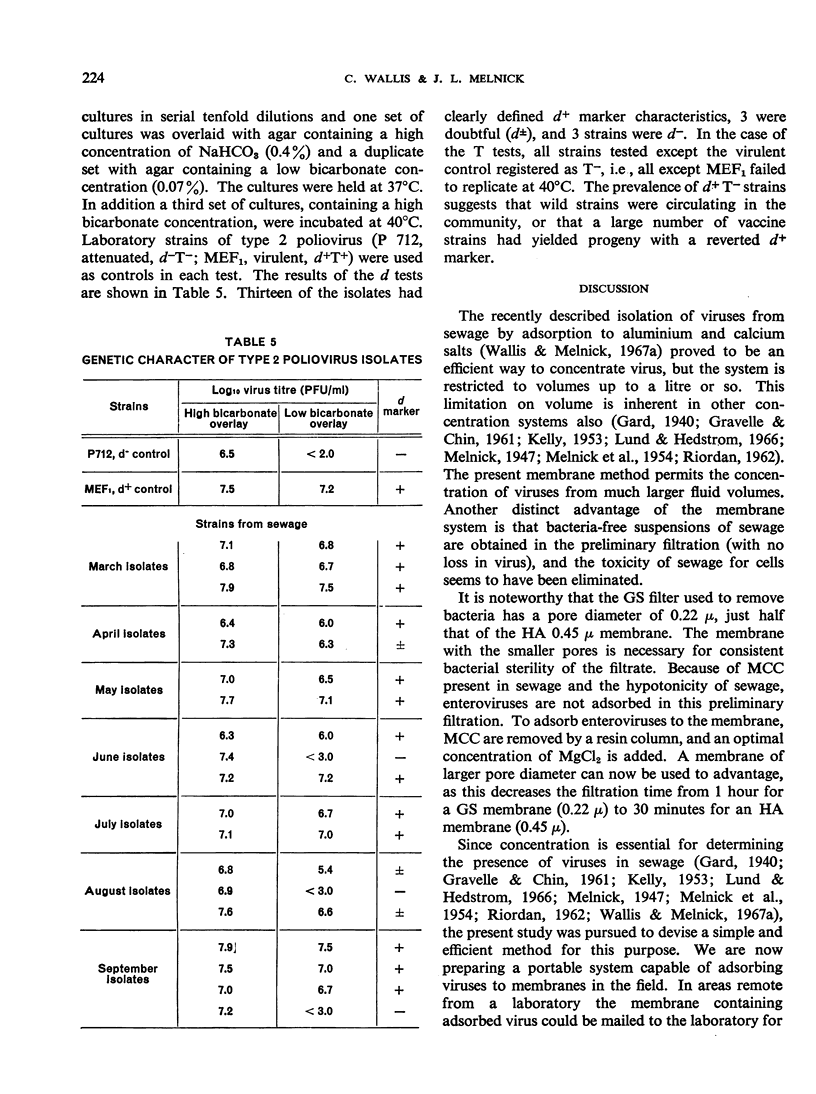Abstract
The authors describe a relatively simple membrane-adsorption method for the efficient concentration of viruses from sewage. Sewage, first freed of bacteria by filtration through membranes under conditions that permit virus to pass freely, is then treated with anion resins to remove organic components that adsorb to Millipore membranes and prevent virus adsorption. The salt concentration of the resin filtrates is increased with MgCl2 to enhance virus adsorption to membranes. The sewage is next adsorbed to a Millipore membrane, from which virus is readily recovered by homogenization in small fluid volumes.
The method was tested in Houston, Texas, for 7 months of 1966, during which period 2795 isolates were made from 10 concentrates of 1-US-gallon (3.78-litre) samples and only 4 from unconcentrated sewage. The isolates included types 2 and 3 poliovirus, 9 echovirus types and 2 coxsackieviruses.
Examination of these type 2 poliovirus strains isolated over a 4-month period showed that 13 of 19 had d+ markers (although none was T+), indicating either that the vaccine strain had reverted in the d marker, or that wild strains were circulating in the population in spite of the absence of clinical disease.
Full text
PDF






Selected References
These references are in PubMed. This may not be the complete list of references from this article.
- KELLY S. M. Detection and occurrence of Coxsackie viruses in sewage. Am J Public Health Nations Health. 1953 Dec;43(12):1532–1538. doi: 10.2105/ajph.43.12.1532. [DOI] [PMC free article] [PubMed] [Google Scholar]
- LIM K. A., BENYESH-MELNICK M. Typing of viruses by combinations of antiserum pools. Application to typing of enteroviruses (Coxsackie and ECHO). J Immunol. 1960 Mar;84:309–317. [PubMed] [Google Scholar]
- Lund E., Hedström C. E. The use of an aqueous polymer phase system for enterovirus isolations from sewage. Am J Epidemiol. 1966 Sep;84(2):287–291. doi: 10.1093/oxfordjournals.aje.a120642. [DOI] [PubMed] [Google Scholar]
- MELNICK J. L., EMMONS J., OPTON E. M., COFFEY J. H. Coxsackie viruses from sewage; methodology including an evaluation of the grab sample and gauze pad collection procedures. Am J Hyg. 1954 Mar;59(2):185–195. [PubMed] [Google Scholar]
- RIORDAN J. T. The 1961 Middletown Oral Poliovirus Vaccine Program. IX. Isolation of enteroviruses from sewage before and after vaccine administration. Yale J Biol Med. 1962 Apr;34:512–521. [PMC free article] [PubMed] [Google Scholar]
- WALLIS C., MELNICK J. L. Magnesium chloride enhancement of cell susceptibility to poliovirus. Virology. 1962 Feb;16:122–132. doi: 10.1016/0042-6822(62)90287-8. [DOI] [PubMed] [Google Scholar]
- WALLIS C., MELNICK J. L. Suppression of adventitious agents in monkey kidney cultures. Tex Rep Biol Med. 1962;20:465–475. [PubMed] [Google Scholar]
- WALLIS C., MENICK J. L. Cationic stabilization--a new property of enteroviruses. Virology. 1962 Apr;16:504–506. doi: 10.1016/0042-6822(62)90234-9. [DOI] [PubMed] [Google Scholar]


